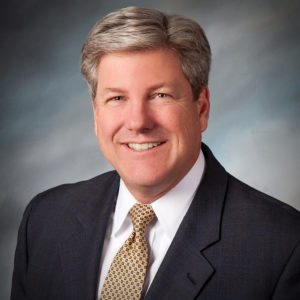Originally published on Resource Advisory Services, April 9, 2018
By J. David Lewis
On Thursday, April 5, I was at the Securities and Exchange Commission (SEC) in Washington, on an Institute for the Fiduciary Standard mission. Our relationship is at this link. Since before 2010, there has been a movement to improve fiduciary protection for investors. The crux is lack of clear ways to distinguish levels of care required among people who appear to be advising in financial services.
Salespeople are paid for selling financial products. Their standard of care is “suitability.” In a shoe store, this might mean: “These shoes are almost the right size.” We know they are selling and get paid more for selling more shoes, not giving advice. In financial services, salespeople can use titles like “advisor” and trappings to imply they are helping make the best decisions. Fiduciary advisors are required to be diligent in understanding what is best and give advice – not sell. It is very difficult for most people to know the difference.
The 2010 effort to improve these differences in power, between salespeople and their customers, got bogged down. Yet, the movement persisted. A Department of Labor (DOL) push was underway when I joined the NAPFA Board of Directors in 2013. DOL could at least focus on retirement accounts. True to its 1983 roots, NAPFA was vocal on these fiduciary issues. Ultimately, the DOL issued regulations, reasonably well designed to phase in fiduciary protections for retirement accounts, including IRAs. Sales organizations pushed back in many ways, including the courts.
In the meantime, the SEC, which regulates both sales organizations (broker-dealers) and investment advisors, has been ramping up its attention to fiduciary issues for both. The phases of the DOL regulations were delayed in 2017. An array of court cases brought differing decisions on whether the DOL Fiduciary Rule would survive. On March 15, a court ruling may have ended the DOL protections, essentially because current DOL leadership does not seem inclined to resolve the differing decisions in higher courts.
Because Bryan encouraged me, I volunteered to participate in meetings with the SEC’s Division of Trading & Markets, Division of Investment Management and Office of Investor Advocate. One regulates sales organizations. One regulates investment advisors, like Resource Advisory Services. The third is a voice for the public. It was an extraordinarily interesting experience. Unlike many beliefs I hear, I found the staffs very dedicated to learning from our perspectives. They did challenge us, with language that could seem to be planted by sales organizations. I am not sure this is a bad thing, assuming they use our perspectives to challenge sales organizations. The people I met certainly seemed committed to getting the final requirements right. If they simply agreed with us, they wouldn’t be doing their jobs.
I believe the fiduciary movement is making real progress. News coverage of DOL Fiduciary efforts alerted many to search for fiduciary advisors. A few years ago, I regularly heard, “What does fiduciary mean?” Now, frequent internet searches for “fiduciary” or “fee-only” advisors find us. Many clearly understand. Nevertheless, there is still confusion. I am seeing “your best interest” in advertising. Based on the organizations involved, some may be fiduciaries. Others probably are not.
A part of our message to the SEC encouraged designating language reserved for fiduciaries that others cannot use to confuse whether they are salespeople or advisors with fiduciary levels of care. In our society, the majority tends to eventually get what they want and need. In this case, I have faith people will find fiduciaries if the clues are clear. It takes a lot of work and time to make this easier for people.
J. David Lewis (DLewis@ResourceAdv.com)

